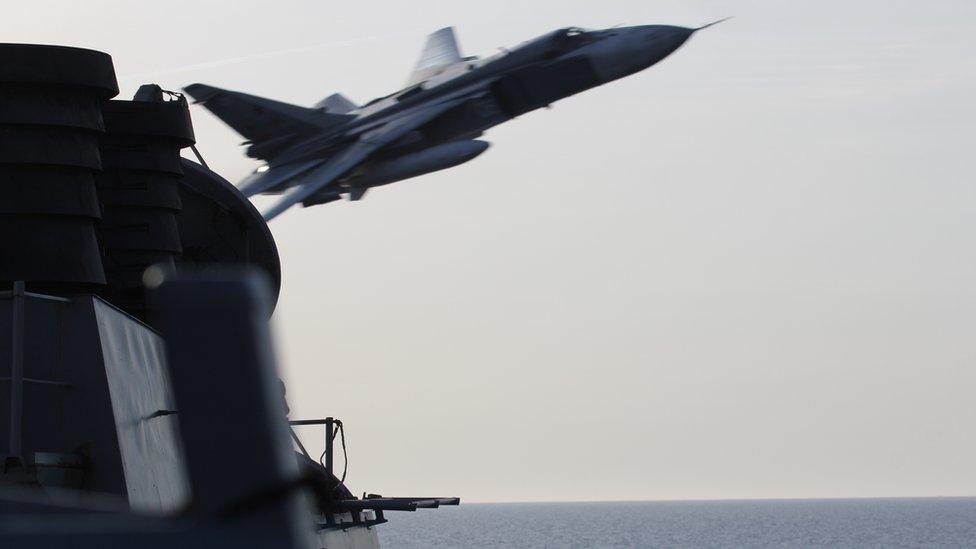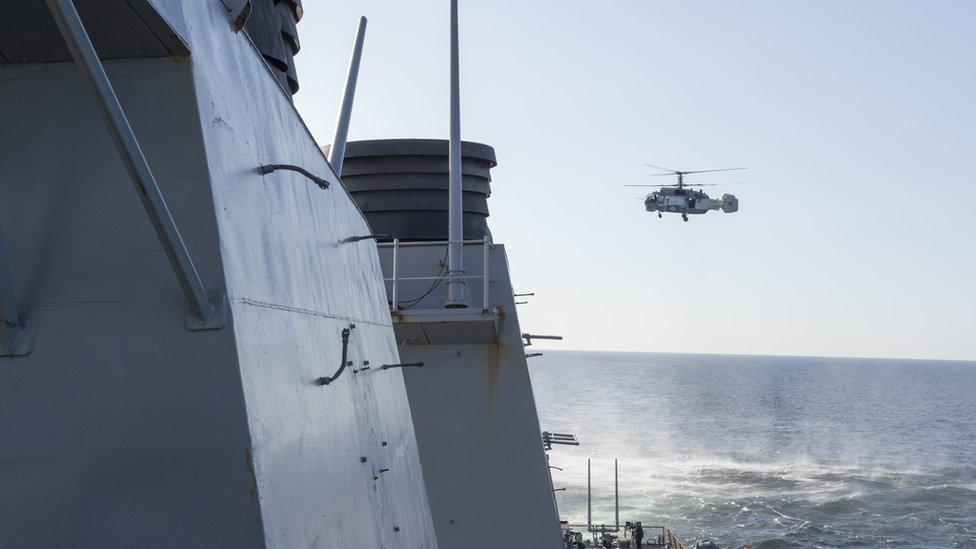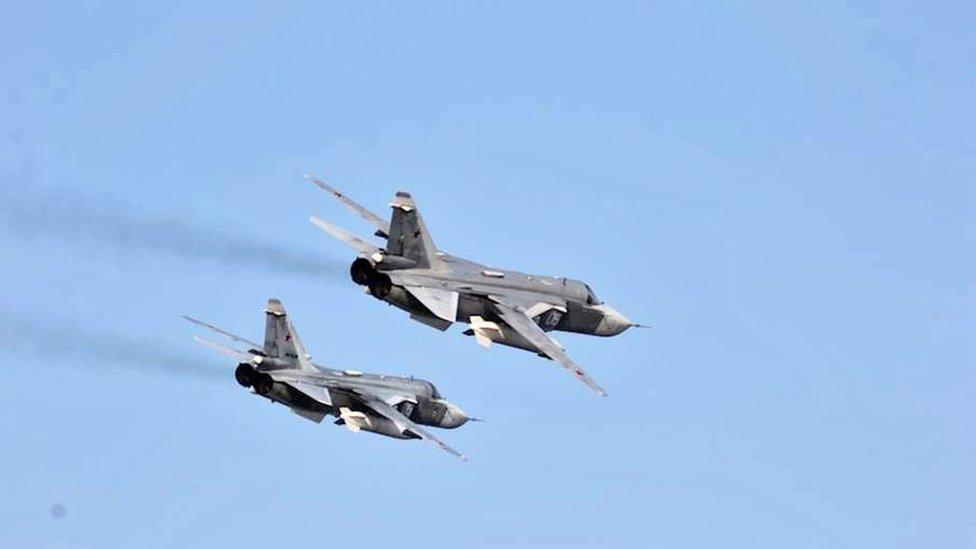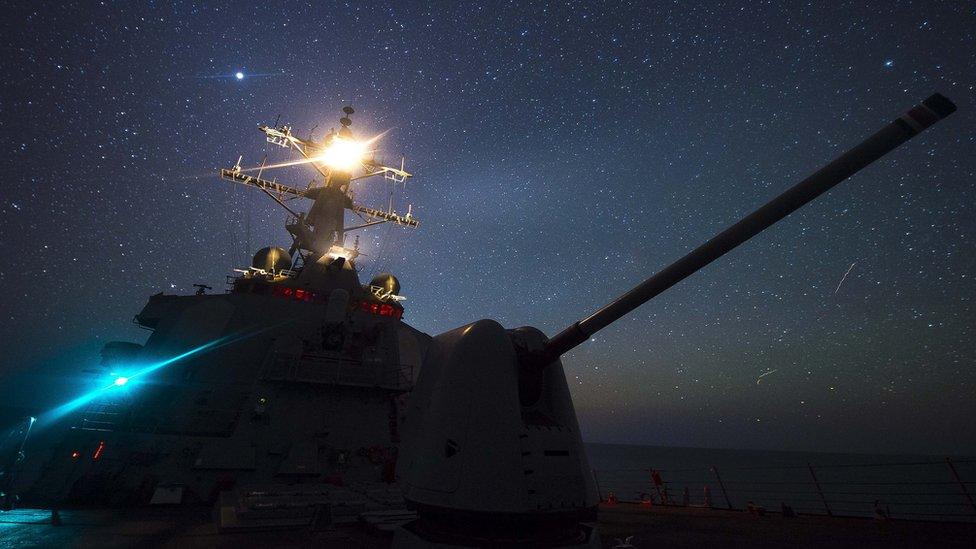Russian warplanes 'aggressively' pass US missile destroyer
- Published
Navy video captures Russian flyby in mid-April
Two Russian planes flew close to a US guided missile destroyer almost a dozen times, American officials have said.
The Sukhoi SU-24 warplanes, in international waters in the Baltic Sea, had no visible weaponry and the ship took no action.
One official called the events on Monday and Tuesday "one of the most aggressive acts in recent memory".
The commander of the missile destroyer, the USS Donald Cook, described the flights as a "simulated attack".
The passes were "unsafe, potentially provocative" and "could have caused an accident," officials said in a release.

The Russian Sukhoi Su-24 aircraft made very low passes by the USS Donald Cook

A Russian Kamov KA-27 Helix surveys USS Donald Cook on 12 April 2016
At one point the jets were so close, about 9m (30ft), that they created wakes in the water around the ship.
The actions may have violated a 1970s agreement meant to prevent dangerous incidents at sea, but it is not clear whether the US is going to protest.
A Russian helicopter taking pictures also passed by the ship seven times.
The Donald Cook was conducting deck landing drills with an Allied military helicopter when the jets made their passes, according to a statement from the United States European Command.
Flight operations were suspended until the jets left the area.
The next day, a Russian KA-27 helicopter did circles at low altitude around the ship, followed by more jet passes.
The aircraft did not respond to safety warnings in English or Russian.

Analysis: Gary O'Donoghue, BBC News Washington

The jets were so close they created wakes in the water near the ship
These close encounters of a military kind between the US and its allies and Russia have escalated significantly over the past two years, ever since Russia's annexation of Crimea and the substantial break down of relations between East and West.
They take various forms. They can be violations of national airspace; narrowly avoided mid-air collisions, close encounters at sea and simulated attack runs.
The incidents have taken place over a wide area - in and around the Baltic states; in the Baltic sea; the Black Sea and even close to Stockholm, when the Swedish authorities believed a Russian submarine had violated its territorial waters in 2014.
They are regarded by defence analysts as a flexing of muscle - a reminder that Russia has military might and cannot be pushed around.
But the frequency of such situations means many fear that a full on confrontation - be-it deliberate or accidental - is just a matter of time between the world's two great military powers.

"We have deep concerns about the unsafe and unprofessional Russian flight manoeuvres," the statement read. "These actions have the potential to unnecessarily escalate tensions between countries, and could result in a miscalculation or accident that could cause serious injury or death."
US officials are reviewing the incident.
A similar incident occurred last June, when Russian warplanes made close passes over a US destroyer in the Black Sea.
Russian media had reported at the time that the USS Ross was acting "aggressively" but the Department of Defense refuted that.
- Published1 June 2015
